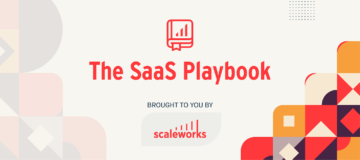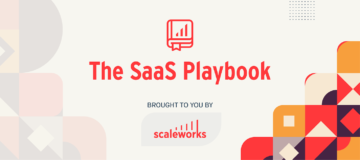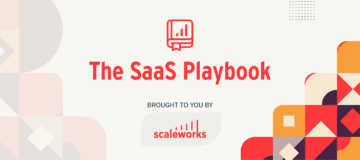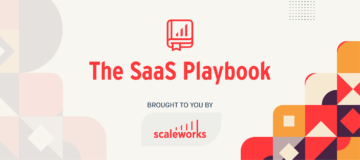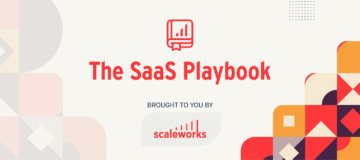Welcome back to The SaaS Playbook, a weekly rundown of the top articles, tactics, and thought leadership in B2B SaaS. Not a subscriber yet?
🍿 It took popup startup WisePops 5 arduous years to get to $1m ARR, which they impressively did as a side hustle and without an in-house development team. That encouraged founder Benjamin Cahen to make the leap of building their own dev team, ultimately propelling them to $2m ARR in just half the time. Of course it’s never as simple as just adding new faces to the team to grow revenue, as hiring for small bootstrapped startups is tough. They added 6 employees during that period and let 4 go – costly when you consider the effort it takes to hire. Hunting for experts who weren’t even on the market and inviting them to team sessions pre-hire was how they landed their best talent, as it gave candidates a real sense of the team and workplace dynamics.
🇪🇺 With more companies open to remote work in today’s world, is a European HQ still worth pursuing? The team at B2B venture firm Front Line would tell you it absolutely does. You need to be where your customers are, so while it might not make sense for early stage companies with primarily US users, it’s essential if you ever plan on expanding internationally. They share a fun cheat sheet covering the 5 most popular EU tech hubs (London, Dublin, Amsterdam, Paris, and Berlin) and their relative strengths and weaknesses (talent, taxes, real estate, etc). On the road to IPO, about 30% of your revenue should come from the EU, so for those who think big, it’s worth playing with the idea as you grow.
🤔 Product-led growth (PLG) puts product at the forefront of landing new users and getting them to use your product, but the truth is the path to users adopting is never just between your product and them. We like to look for advice, whether it is from our colleagues, friends, or random Quora thread, which is why the idea of community-led growth resonated with us. It acts as a multiplier on top of PLG by facilitating interactions amongst your users, which provides value beyond the product itself. The linked article from Corinne Marie Riley covers the main channels you should be looking at for (dare we say) CLG, as well as a Playbook on how to get started.
🍯 Billing platform Chargebee studied ~6,500 SaaS businesses to see what trends they could identify, and came away with some helpful findings. Most interesting was that companies who localized their pricing cosmetically (automatically converting currency to a visitor’s country) grew 40% faster than companies that did not, and those who localized by market (actually setting the price point relative to a specific market) grew twice as fast. They note that pricing localization should not be a priority until you hit $5m ARR, but at that scale it warrants the time to identify your top 10 markets and see what leverage your pricing can provide.
🤖 The world of recruitment has evolved significantly in the past 10 years, making many of the popular reads on hiring fairly dated. Katrina Collier’s The Robot Proof Recruiter is a more modern take on hiring, focusing on how to utilize AI, robotics, and chatbots in order to attract and recruit the right people. Collier is quick to note that social media and digital strategies are still only a part of the full recruitment cycle, and shares how you can supplement these techniques with more personal, authentic methods that show candidates how your company goes above and beyond.
Source: https://thesaasplaybook.substack.com/p/-are-european-hqs-worth-pursuing
- advice
- AI
- Amazon
- amsterdam
- article
- articles
- Authentic
- B2B
- berlin
- BEST
- billing
- Building
- businesses
- channels
- chatbots
- Companies
- company
- Currency
- Customers
- Dev
- Development
- DID
- digital
- dublin
- Early
- early stage
- employees
- estate
- etc
- EU
- European
- expanding
- experts
- faces
- FAST
- Firm
- founder
- full
- fun
- good
- Grow
- Growth
- hire
- Hiring
- How
- How To
- HTTPS
- idea
- identify
- IPO
- IT
- Leadership
- Leverage
- Line
- Localization
- London
- Making
- Market
- Markets
- Media
- medium
- Most Popular
- open
- order
- paris
- People
- platform
- Popular
- price
- pricing
- Product
- proof
- real estate
- recruitment
- remote work
- revenue
- robot
- robotics
- SaaS
- Scale
- sense
- setting
- Share
- Shares
- Side Hustle
- Simple
- small
- So
- Social
- social media
- Stage
- started
- startup
- Startups
- supplement
- tactics
- Talent
- Taxes
- tech
- thought leadership
- time
- top
- Trends
- us
- users
- value
- venture
- weekly
- WHO
- Work
- Workplace
- world
- worth
- years






